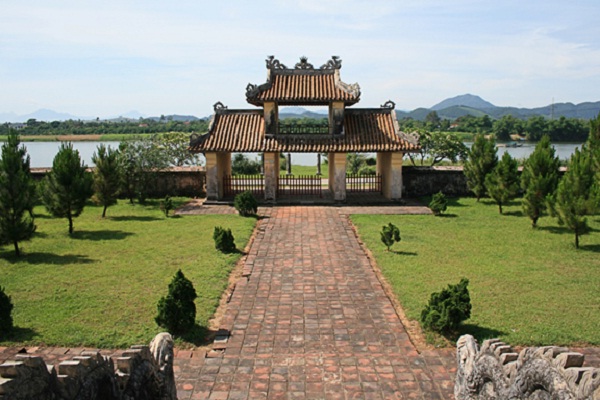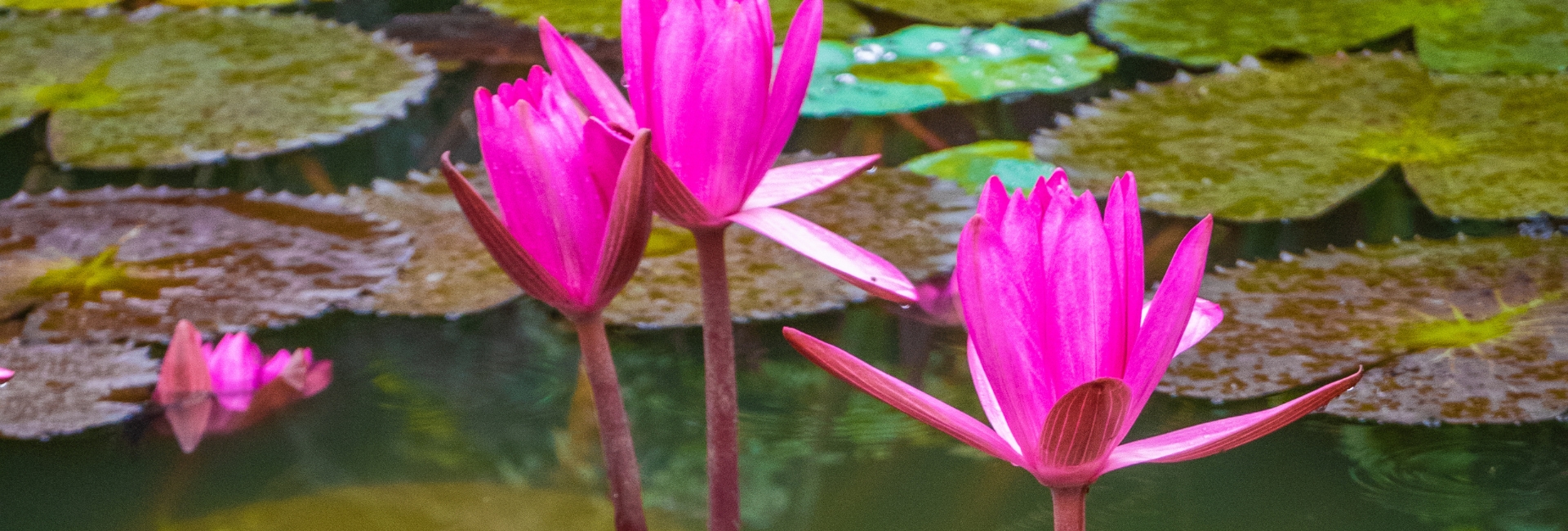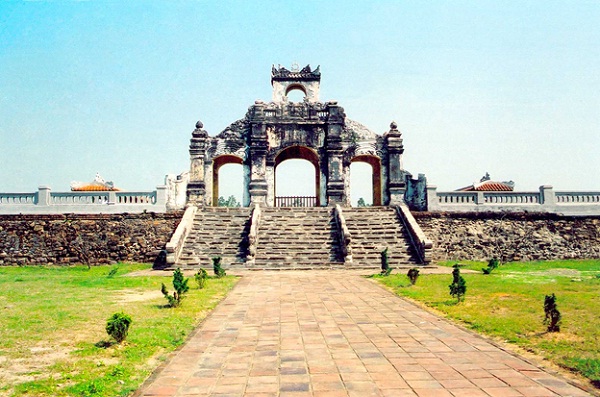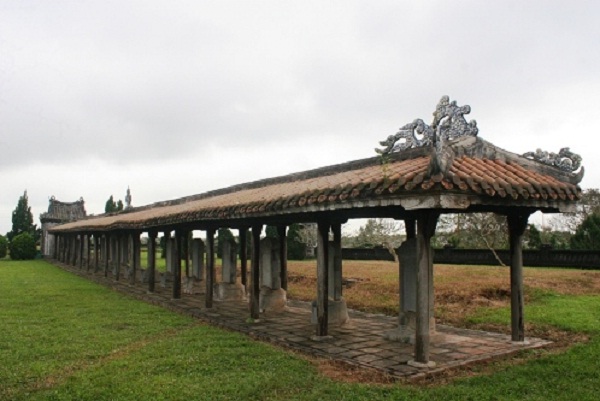Immerse yourself in the rich cultural heritage of Hue by visiting the Van Mieu Hue, also known as the Hue Temple of Literature. We are talking about Van Mieu, a relic of the temple dedicated to Confucius. There is also Van Mieu in Hanoi which is older and more iconic, but Hue’s Van Mieu holds its own values as well. Please follow Indochina Voyages on a brief tour to explore this historical place.

Location
In Hue, Van Mieu (often called Van Mieu Hue) lies on the bank of Huong River, to the west of the Citadel, just 1 kilometer from the prestigious Thien Mu pagoda. Located on Nguyen Thai Hoc Street, this architectural gem lies within close proximity to other prominent attractions, making it easily accessible for visitors. This is a place dedicated to worshiping Confucian deities and memorizing celebrated scholars of Confucianism.
History
The Hue Temple of Literature, also known as Van Mieu Hue, has a rich history. Legend has it that the first temple was built in Trieu Son village during the Nguyen kings’ expansion. In 1770, it was moved to Long Ho commune and became known as the Temple of Literature of Dang Trong.
In 1802, during the establishment of the Nguyen Dynasty, the present-day temple was built on Van Thanh Street. It honors Confucius and other sages who contributed to Confucianism’s development. Over time, the temple underwent repairs and additions but suffered damage during the French colonial era in 1947.
For years, the temple was somewhat forgotten. However, recent years have seen a resurgence of interest, making it a must-visit destination on the Hue tourist map. Today, the Hue Temple of Literature stands as a symbol of Confucianism’s legacy and offers a glimpse into Vietnam’s cultural heritage.
What to see?
Van Mieu Hue is situated on the top of a hill which is three meters higher than the surrounding land. All the construction works were built on a square surface of 160 meters long on each side and are enclosed by surrounding walls called La Thanh.
There are about 50 big and small constructions, including the steles, which were carved with the names, ages, and native villages of 239 doctors in the examinations from the Nguyen era.
Behind the main gate, Dai Thanh Dien is situated in the center of Van Mieu Hue. Dai Thanh Dien, built on a high platform, is the main and biggest temple of Van Mieu Hue, a shrine to worship Confucius and hold important ceremonies.
Two small houses, Dong Vu and Tay Vu, are built in front of Dai Thanh Dien for worshiping 72 sages and the Confucian deities. Huu Van Duong and Di Le Duong are built to the left and right of the main gate for kings and mandarins to prepare their outfits before attending ceremonies. Tours in Vietnam
From Minh Mang’s time onwards, National Examinations were held in the large yard in front of the main shrine. Therefore, steles bearing the names of successful candidates were also erected here. Two rows of 32 preserved steles were gradually erected in the yard of the main temple from 1831 to 1919. Besides, Van Mieu Hue also has other constructions such as: Than Tru (the kitchen), Than Kho (the storage), Tho Cong house (a shrine for worshipping the genie of the earth), etc. All constructions are made of ironwood, with majestic architectural design and symmetrical decoration.
For more than half of this century, Van Mieu Hue has been severely damaged by nature and wars. Many items were destroyed, and the site turned into a deserted and devastated place. Luckily, many important constructions still remain, including the main temple and steles. It has just been recently renovated by local authorities to preserve the cultural and historical values of the Nguyen Dynasty.
How to have the best visit?
For the best visit with excellent experience and respect, here are some information for you:
- Opening Hours: Van Mieu Hue is open all day. You can choose to visit this place anytime to suitable with your schedule.
- Admission Fee: It is free entrance, so be free when coming.
- Dress Code: As Van Mieu Hue is a sacred site, it is important to dress respectfully. Modest clothing that covers shoulders and knees is recommended.
- Guided Tours: Consider joining a guided tour to gain deeper insights into the history and significance of Van Mieu Hue. Knowledgeable guides can provide valuable commentary and enhance your overall experience.
- Photography: Capture the beauty of Van Mieu Hue; however, be mindful of any restrictions on photography, especially in designated areas.
Though not remaining intact, Van Mieu Hue is still a unique symbol of Vietnam’s educational system during Nguyen Dynasty. People visiting there will know about the tradition of appreciating knowledge appreciation, respecting scholars, and encouraging study in the past.
With its central location, profound history, and captivating attractions, Van Mieu Hue is a must-visit destination for travelers seeking to discover the cultural treasures of Hue. Plan your visit accordingly, follow the travel tips, and embark on an unforgettable journey through this remarkable site of cultural significance.
Indochina Voyages Team










